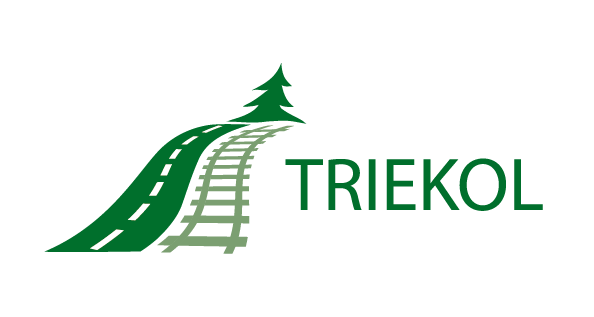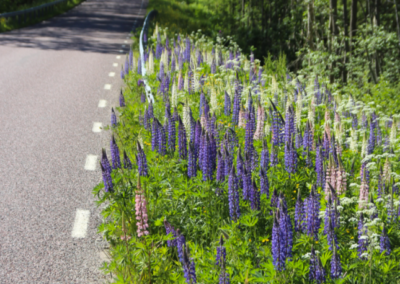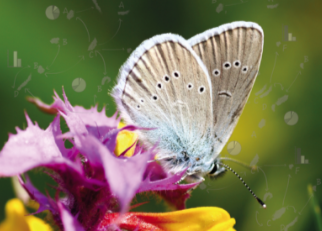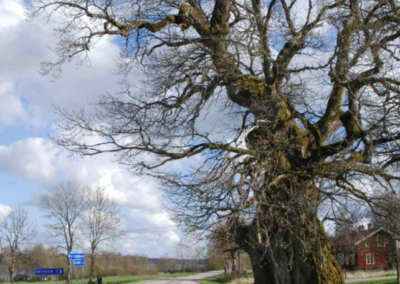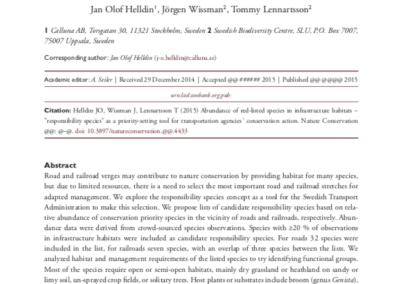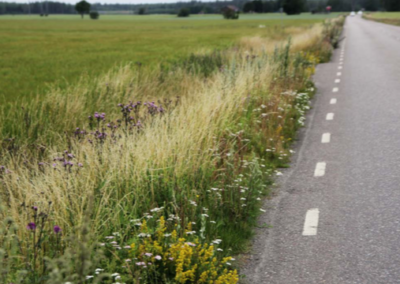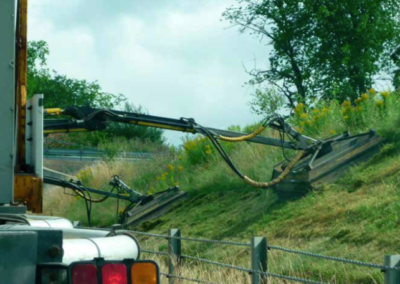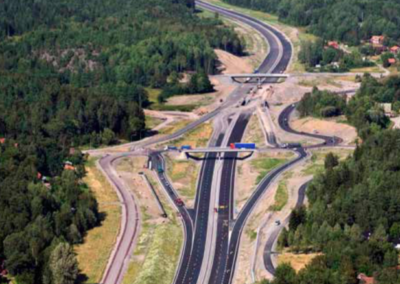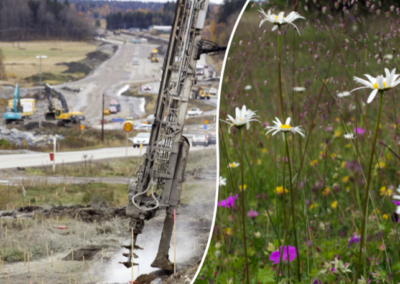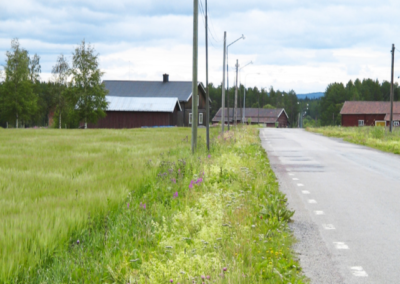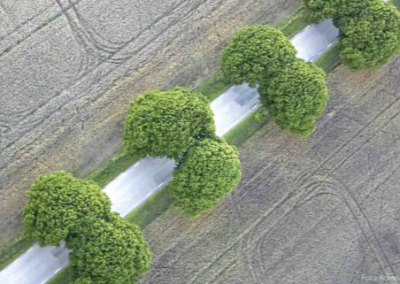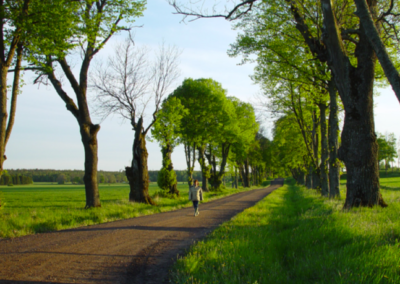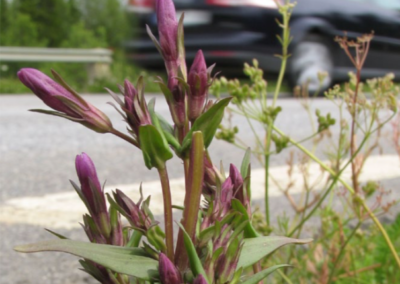Infrastructure habitats
TRIEKOL I-IIHabitats created or emerged in connection with roads, railroads and other man-made environments, can be important in species conservation work. Many of these habitat types are otherwise rare or declining in the landscape, for example managed grassland, ponds, bare soil and trees along roads.
The subproject Infrastructure habitats studied these habitats and their biodiversity in several ways.
Habitats with potential
Pilot studies and surveys have shown that infrastructure habitats replace or supplement habitats in the agricultural landscape, such as hay meadows and pastures. TRIEKOL’s research on infrastructure habitats highlight the positive potential for both endangered and common species in road and railway areas, and develop goals and strategies for the optimal management of the infrastructure habitats.
TRIEKOL’s research on infrastructure habitats highlight the positive potential for both endangered and common species in road and railway areas. In addition, goals and strategies for the optimal management of the infrastructure habitats was developed.
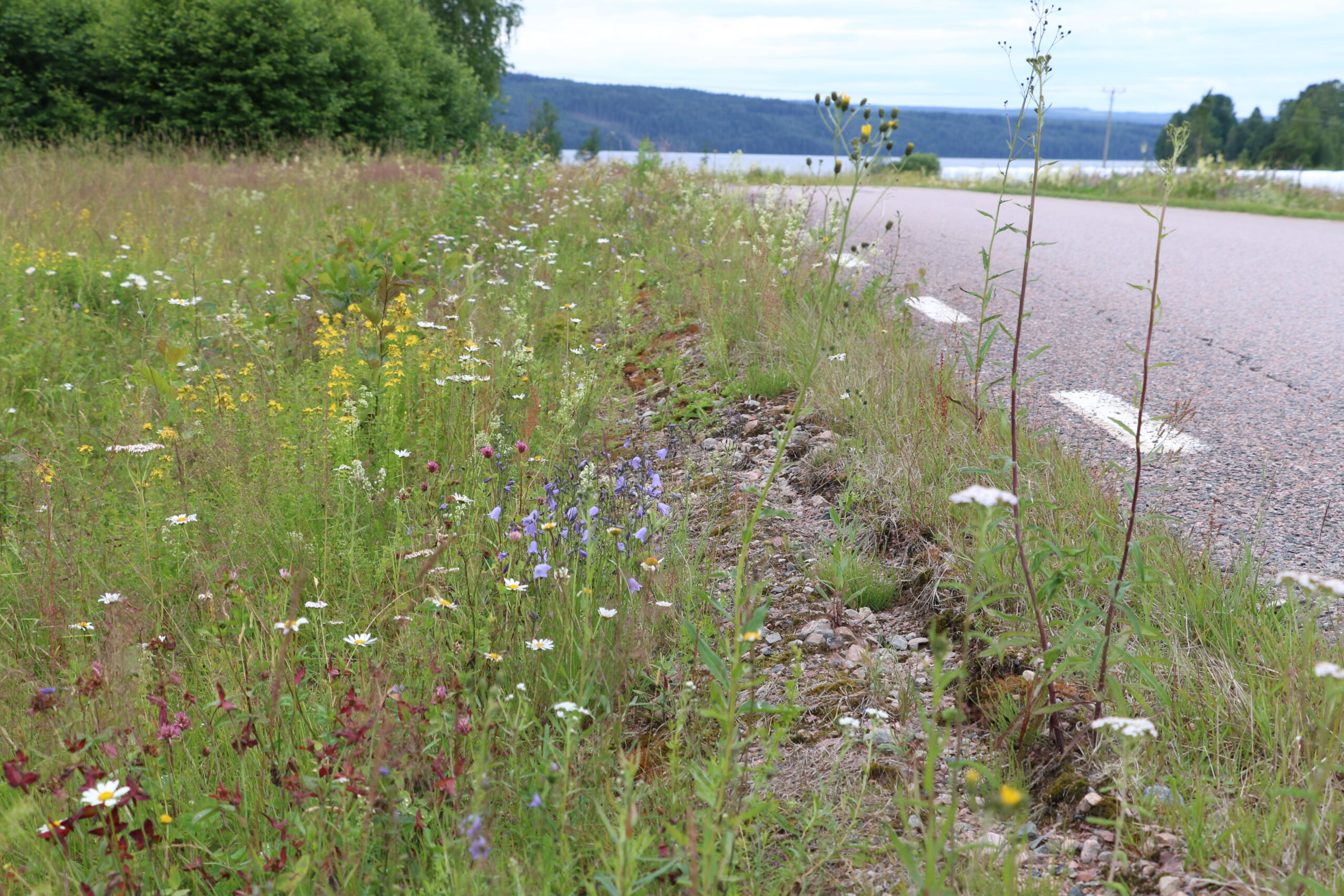
Roadsides have become an important refuge for many endangered species from the traditional agricultural landscape, when hayfields and pastures are abandoned and overgrown or replaced by plantations. Photo: Åsa Röstell.
Infrastructure habitats cover large areas and exists in most parts of the country. In addition there is an extensive organization to establish and maintain the infrastructure areal component, ie actual roads, railroad lines etc. Accordingly, the infrastructure habitats have a great potential to contribute significantly to the conservation of biodiversity.
However, roads and railways are conservation areas with restrictions – biodiversity is of course not the main purpose of infrastructure. Also a significant contribution to the preservation of biodiversity can not be taken for granted. In some habitats, the management needs to be improved. In others, present management is good, but there is no long-term guarantee of habitat quality because the biological values are not recognized. Some habitats may indeed have values, but not high enough to justify any special efforts.
If infrastructure habitats are to become and remain important for the conservation of biodiversity, it is crucial that their importance is assessed so that maintenance operations can be optimized. Management practices must be developed that help biodiversity, while still being practical and economically feasible.
Research aims
The TRIEKOL research on infrastructure habitats (in program period I-II) aimed to:
Describe the ecological potential, in order to assess the contexts in which infrastructure habitats are of greatest benefit vs. have no significant benefits. We point out species, habitats and areas where the Swedish transport administation have a particular responsibility, and access criteria for identifying valuable streches of roads and railroads. This means that the infrastructure habitats are put in a wider conservation context, for example by comparison with habitats in the surrounding landscape, with landscape history, etc.
Find ecological thresholds, for example levels in habitat quality that must be reached to be relevant for conservation, and for some aspect of biodiversity analyse how much infrastructure habitats can contribute to conservation.
Find the practical-economic potential in order to identify the situations where construction and maintenance of infrastructure habitats may have the largest contribution, and conversely, will not be able to contribute significantly to biodiversity conservation.
Develop a toolbox of different measures to be used in various situations in construction and maintenance. The toolbox can be supplemented as new methods are developed.
Initiate new efforts, and when necessary improve ongoing, efforts for the conservation of biodiversity in construction and maintenance.
Develope proposals for monitoring schemes and, if necessary, initiate long-term trials.
Highlight and initiate different forms of collaboration between stakeholders regarding the management of infrastructure habitats.
Find ways to expose the present values and future potentials of infrastructure habitats.
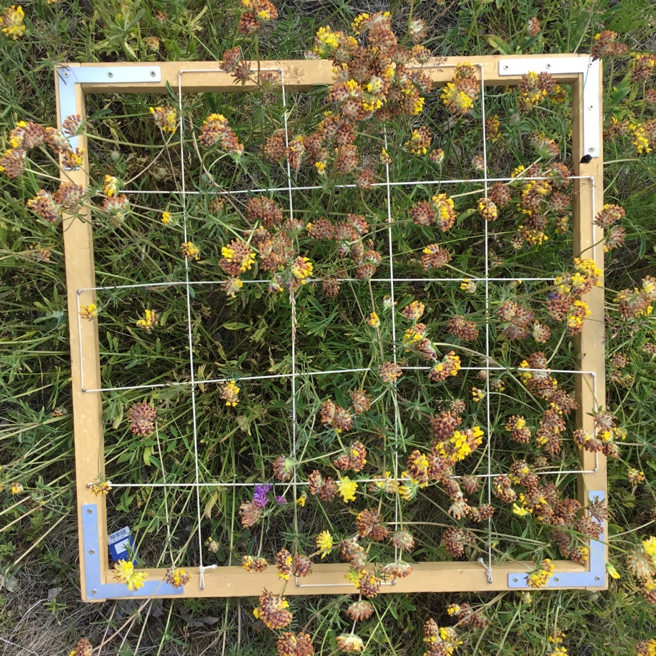
A square of vegetation in a railyard being inventoried. Anthyllis vulneraria is one of the species which can occur in abundance in sandy railyards. Photo: Jörgen Wissman.
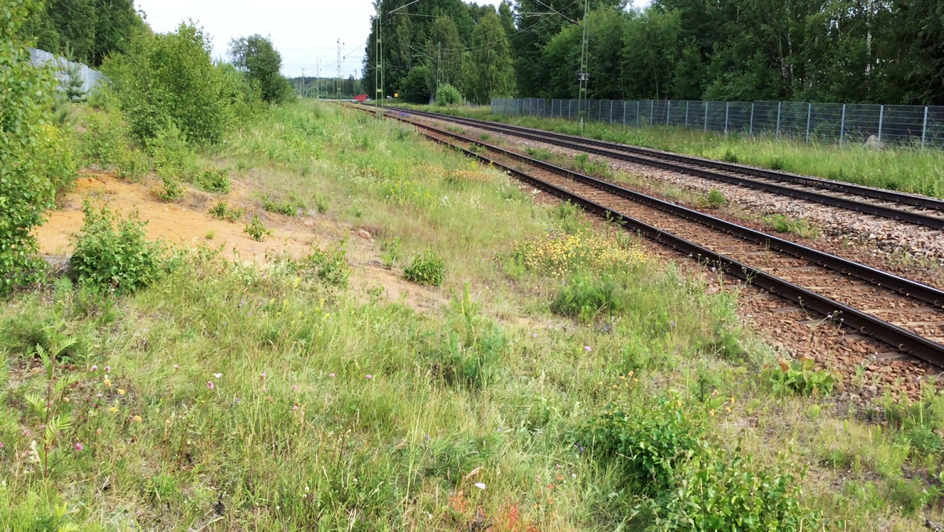
A trail area for different management regimes to prevent overgrowth and preserve sensitive flora and exposed sand as habitat for wild bees. Photo: Jörgen Wissman.
Focus areas and projects
Developing methods, tools and collaboration
All method development on new constructions and maintenance must be done in the light of the fact that biodiversity is obviously not the main purpose of transport infrastructure. Thus, the methods must be practical and economically feasible.
Therefore, when TRIEKOL has contributed to the development of practical guidelines for new constructions (see for example the leaflet Sand habitats), this has been done in close collaboration with the Swedish Transport Administration (STA). Workshops with the STA, together with county boards, have shown that expert knowledge about species and ecology is also often required to achieve the best possible maintenance.
That’s why TRIEKOL initiated collaboration groups between the STA and nature conservation organisations. TRIEKOL has also put together good examples of nature conservation in infrastructure habitats, made through collaborations. Read more about this in the subproject Cooperation.
An important task within TRIEKOL has been to develop tools for prioritization and planning. In order for the infrastructure habitats to become and remain important for the conservation of biodiversity, their importance has to be evaluated. Then management efforts can be made where they are most useful.
Invasive species
Infrastructure habitats plays an important role in the green infrastructure of the landscape, by offering a network of different kinds of grasslands. In TRIEKOL, such landscape ecology has not been dealt with, with the exception of the invasive species aspect. While infrastructure habitats constitute desirable distribution pathways for many species, they can also be gateways for unwanted, invasive species that threaten other biodiversity.
TRIEKOL analysed the the roles of the Swedish Transport Administration and the infrastructure in the problem with invasive species. This was done trough a combination of literature compilation and interviews with various organisations affected by invasive species. The report deals with the species concerned, which biotopes they threaten and spread in, which legal and practical frameworks deal with the matter, etc.
Publikationer och presentationer
The subproject Infrastructure habitats is reported in several reports in Swedish and scientifically in an article about responsability species for the transport sector in Nature Conservation (see also below).
Contact for the subproject
Tommy Lennartsson
Ekolog och docent, SLU Institutionen för stad och land
tommy.lennartsson@slu.se
+46 (0) 705-86 83 81
